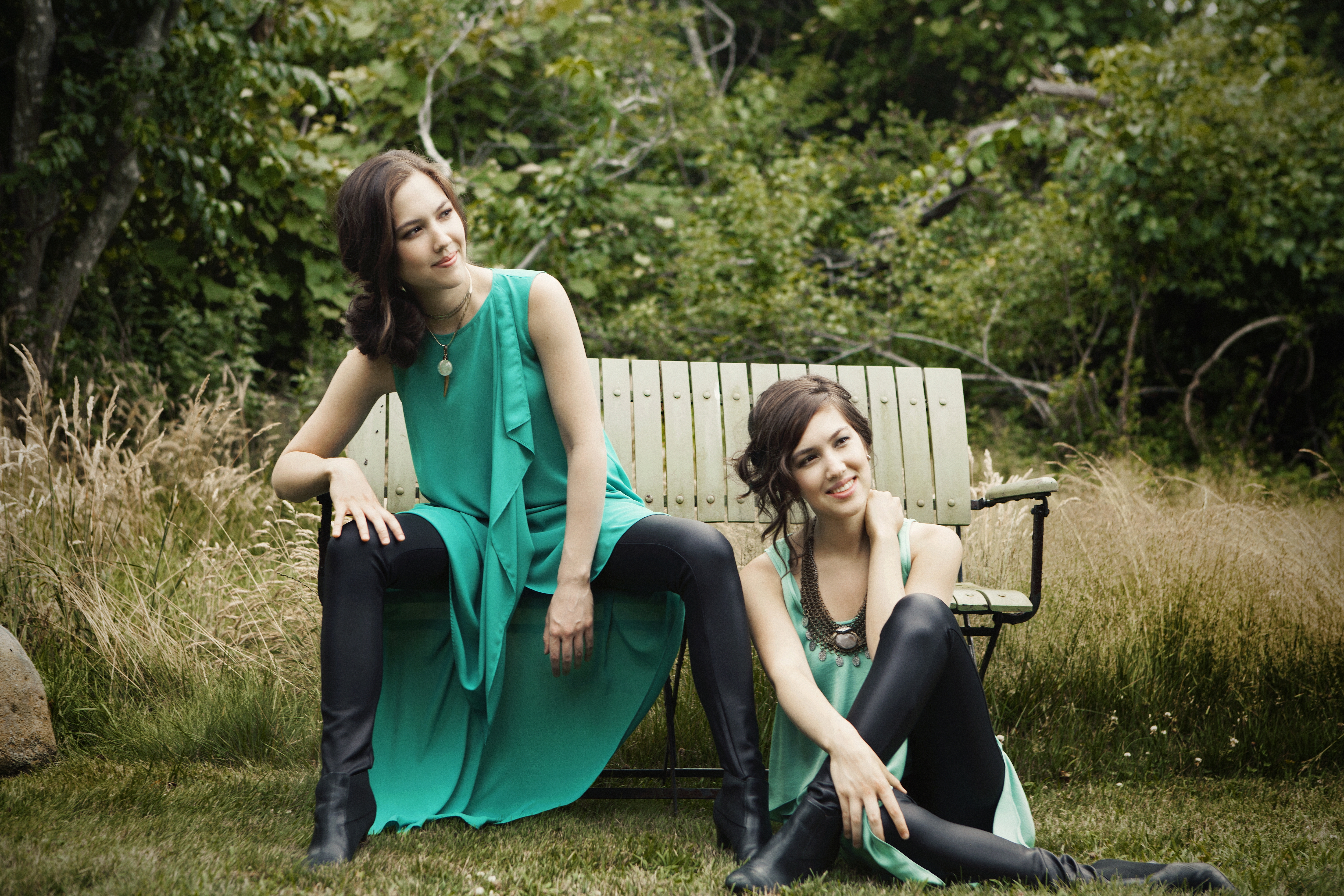Many renowned classical piano duos have kept it in the family — consider the Labèque sisters, the Pekinel sisters, or the Kontarsky brothers. The vast benefits of a musical partnership between siblings were obvious during Christina and Michelle Naughton’s concert with The Gilmore’s Rising Stars Series yesterday. The two 28-year-old pianists brought esoteric unity to their art form in a way only identical twins can. But as their spellbinding Sunday afternoon performance showed, the Naughton sisters are no gimmick. The two extraordinary musicians demonstrated uncanny harmoniousness and technical precision, even when expressing individual soulfulness and spontaneity across two separate Steinways.
Graduates of The Juilliard School and the Curtis Institute of Music, the Naughtons’ duo work evolved organically from their first debut together in 2008. Since launching their professional careers, they have captivated audiences around the globe and received favorable reviews for their second album, “Visions.”
Donned in synchronized, geometrically-patterned dresses, the Naughton sisters began their completely memorized Wellspring Theater performance seated at the same bench. Starting the concert with Maurice Ravel’s “Mother Goose Suite,” a piece for one piano and four hands, was a clever choice. The delicate, balletic suite of five fairytale stories set an intimate mood, and offered a glimpse of the musical conversations the twins can conjure through their nonverbal dialogue. Their interpretation of Ravel’s work captured the French composer’s signature lushness and refinement, and they openly showed their enjoyment as they embodied the voices of different fairytale characters.
Christina then moved to a separate piano to perform Frederic Chopin’s “Rondo for Two Pianos in C Major” with Michelle. As their fingers danced across their respective keyboards, the Naughton sisters demonstrated their astounding abilities to exchange melodies seamlessly and synchronize subtle nuances in phrasing. They imbued every note with unrestrained expression, from the tender and lyrical refrain to the muscular and electrifying coda.
The next piece showcased the stylistic breadth of the Naughton sisters, as well as their keen understanding of contemporary music. “Hallelujah Junction,” by leading avant-garde American composer John Adams, explores the possibilities of identical material played at a slight delay, creating echoing sonorities between two grand pianos. The Naughton sisters’ brought a joyful effervescence to the circuitous three-movement work. The music adopted a clangorous, locomotive quality as the twins fastidiously pinged rhythms and chords back and forth. Both calculated and groovy, the Naughtons’ rendition of the piece was a thrilling highlight of the concert.
Following intermission, the Naughton sisters teamed up at one piano once again to perform Felix Mendelssohn’s “Andante and Variations in B-flat Major,” a piece the composer once performed with his equally talented sister, Fanny. The Naughtons’ lithe interpretation allowed each variation to unfold organically and seamlessly, and explored the expanses of technical and emotional intensity.
The final piece of the program both signaled toward the impending holiday season and paid tribute to the piano’s ability to express a world of sound. The Naughton sisters captured all the flamboyance and fire of Pytor Ilyich Tchaikovsky’s beloved suite from “The Nutcracker” with impeccable detail and virtuosity. Although the tempo of some numbers felt hectic and hurried (at least for a dancer’s feet), the audience received the performance exuberantly with a standing ovation. For an encore, the twins performed a sombre and lovely cantata by Johann Sebastian Bach, “God’s Time is the Very Best Time.”
As the Sunday performance showed, these two young pianists are a musical treasure that need to be heard to be believed. Let’s hope they return to West Michigan soon.





